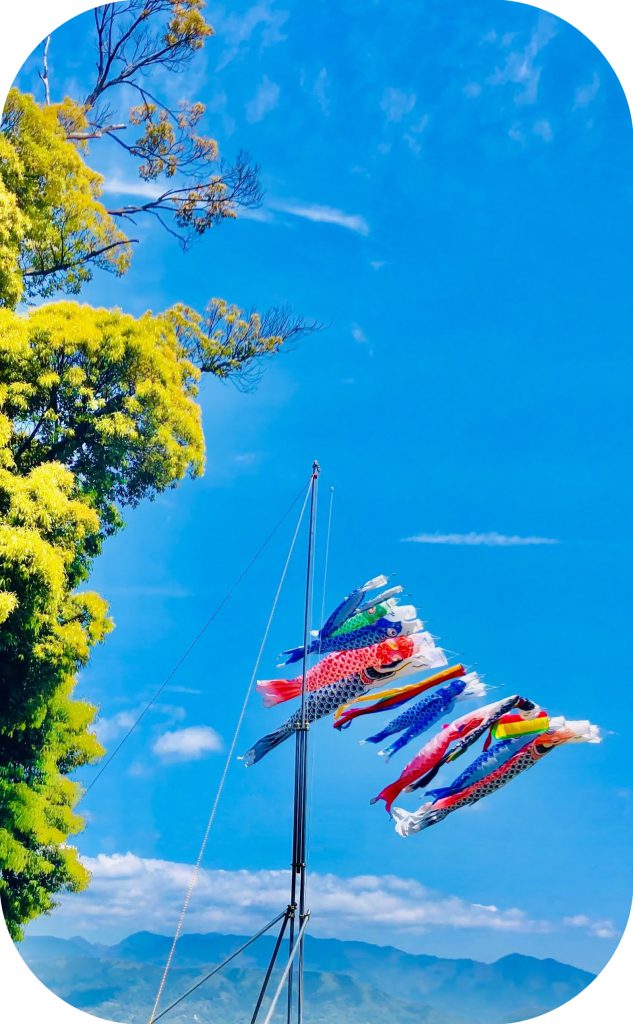
Tomorrow (5/5) is “Children’s Day”, the Boy’s Festival, if back in history. Carp streamers are swimming high in the sky all over Japan. Boy’s Festival has been around since the Heian period, but it wasn’t until the Edo period that the carp nobori began to be fried. First of all, in the custom that started in the samurai family, we put up a nobori that imitated the shape of a carp to be displayed in the garden of the home in the hope of the healthy growth of boys. It was a custom in the Kanto region, mainly including Edo, which was not found in Kansai (upper) at that time. In the middle of the Edo period, merchants began to practice this custom, and it is said that carp streamers began to grow in size as it spread to the Kansai region. Initially, only black carp was used, but from the latter half of the Meiji era to the Taisho era, two carps, a true carp (black carp) and a scarlet carp (red carp), came to be given as a pair. Eventually, in the latter half of the 1955’s, even smaller green carp was added, and due to changes in family views, true carp became a father, scarlet carp became a mother, and carp represented by blue carp. Before the Meiji era, most of the materials were made of Japanese paper, but in the latter half of the Meiji era, it was made of cotton, and in the 30’s of the Showa era, it was made of synthetic fiber.
明日(5/5)は端午な節句、「こどもの日」です。日本全国、つづ浦々に天高く鯉のぼりが泳いでいます。端午の節句は平安時代からありましたが、鯉の幟を揚げるようになったのは江戸時代からです。まず武家で始まった風習で、男児の健やかな成長を願って家庭の庭先に飾る鯉の形に模して作った幟を掲げました。主に江戸を含む関東地方の風習で当時の関西(上方)には無い風習でした。江戸時代中期になると商人がこの風習を行うようになり、それが関西にも広まり次第に大型化したものが鯉のぼりの起こりとされています。当初は黒い鯉だけでしたが、明治時代後半から大正時代にかけて真鯉(黒い鯉)と緋鯉(赤い鯉)の二匹を一対であげるようになりました。やがて、昭和30年代後半にはさらに小さい青鯉が加えられ、家族観の変化なども相まって、真鯉は父親、緋鯉は母親、青鯉表す鯉として定着しました。素材も、明治以前は和紙は和紙でできたものがほとんどでしたが、明治後半には綿製、昭和30年代には合成繊維製へと切り替わりました。
